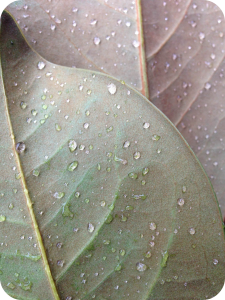Seeing is Love
2013
“Drawing’s not hard,” a friend once said to me as I enviously watched a detailed still life take shape under her hand. “You just have to look at what’s actually there instead of what you think is there.”
The truth of that statement slammed into me, hard. At the time—my early high school years—it was a concept I’d never considered. But suddenly it made sense why the figures I drew never really looked like people, why the trees never looked like trees. I was drawing the images I already held in my mind rather than what was actually in front of me.
It turns out that we do this all the time. Our minds fill in the blanks of the world around us, saving themselves time and energy as they do. This is highly adaptive, of course; having to pay full and deep attention to every detail of the world around us is exhausting and time-consuming. The ability of our brains to filter out what is already known—and thus deemed less important—frees up attention so we can focus on other things.
But it can also carry over into a state of dullness, of boredom. When we think we already know what’s there without even looking at it, the world can seem tiresome; every action we take can become tedious. Our natural human curiosity becomes buried under the sense of already knowing, and we lose the enjoyment of exploring our lives and our surroundings with care and interest.
If you hang out with young children, you can watch them investigate their own worlds with fathomless inquisitiveness. Things adults just walk on by without noticing become the source of deep and careful inquiry—not to mention joy. The delight children feel in the discoveries they make is a delight that’s still available to each and every one of us who’s willing to stop, to let go of the idea of what’s already known, and to really look.
Contemplative photography also opens a path toward this. Through the lens of the camera, what we see becomes the focus of our attention in a different way than it may have been had we just stopped to look. We begin to see shapes and lines, colors and textures in ways we hadn’t considered before, and in the moment or two when we’re snapping photos, our eyes and our minds are wholly focused on what’s actually there.
Because attention is the most sincere form of love we can give, what we pay attention to matters. It’s normal and natural that we’re sometimes bound up in thoughts that are unrelated to our surroundings—this is part of being human, of having a mind. But when we can remember to grant the fullness of our kind regard to what’s right there, new possibilities open to us.
What helps you stop and remember to see? How do you show love to the world around you through your attention? I’d love to hear your thoughts and ideas in the comments.
2 comments
Trackback e pingback
No trackback or pingback available for this article


I love the drawing metaphor…
Look at what’s actually there instead of what you think is there… I guess that’s one of the riches received by the artist.
Thanks, Paige.
Yeah, I remember how completely it blew me away when she said that. Obviously it’s stuck with me a while.
Thanks for your comment!